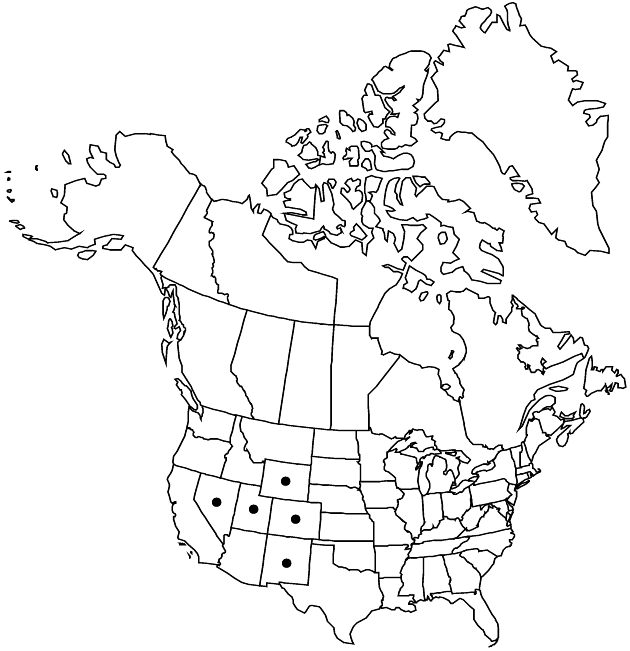Ericameria parryi var. parryi
Common names: Parry’s rabbitbrush
Endemic
Plants 30–100 cm. Leaves usually crowded, green; blades 3-nerved (only midnerves prominent), linear, 30–80 × 2–3 mm, faces glabrous or puberulent, often minutely stipitate-glandular, ± resinous; distalmost overtopping arrays. Heads usually 5–12+ in racemiform arrays. Involucres 9–12 mm. Phyllaries 10–15, mostly chartaceous, outermost sometimes herbaceous-tipped, apices erect, attenuate. Florets 8–20; corollas yellow, 7.9–10 mm, tubes sparsely hairy, throats gradually dilated, lobes 1.4–2.1 mm. 2n = 18.
Phenology: Flowering late summer–fall.
Habitat: Open, dry hillsides and plains
Elevation: 2000–2900 m
Distribution

Colo., Nev., N.Mex., Utah, Wyo.
Discussion
Variety parryi is widespread in the Rocky Mountain region.
Selected References
None.
Lower Taxa
None.